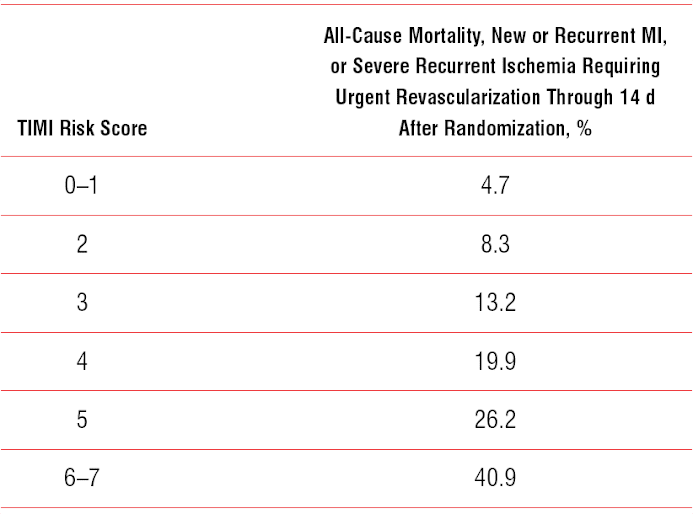

0.68 long-term cardiac mortality: 0.91 vs. GRACE risk scores showed a better predictive ability than TIMI risk scores both for in-hospital and long-term outcomes. Compared to TIMI medium group + GRACE < 140 subgroup, the TIMI medium + GRACE high-risk (≥ 140) subgroup had a significantly higher in-hospital events (39.5% vs. Further subgrouping the TIMI medium group showed that half (53.5%) of the TIMI medium risk population was GRACE high risk (≥ 140). GRACE score grouped most patients (45.7%) into high risk, while TIMI grouped the majority (61.2%) into medium risk. Long-term outcomes were all-cause mortality and cardiac mortality in 4-year follow-up.Ī total of 232 patients were included (female 29.7%, median age 67 years), with a median follow-up of 3.7 years. In-hospital endpoints were defined as the in-hospital composite event, including mortality, re-infarction, heart failure, stroke, cardiac shock, or resuscitation. Patients were scored by TIMI and GRACE scores on hospital admission. This retrospective observational study consecutively collected patients in a large academic hospital between 01/01 and and followed for 4 years. Limited study compared two risk scores, the Thrombolysis in Myocardial Infarction (TIMI) and Global Registry of Acute Coronary Events (GRACE) risk scores in the current East Asian NSTEMI patients. Risk stratification in non-ST segment elevation myocardial infarction (NSTEMI) determines the intervention time.


 0 kommentar(er)
0 kommentar(er)
